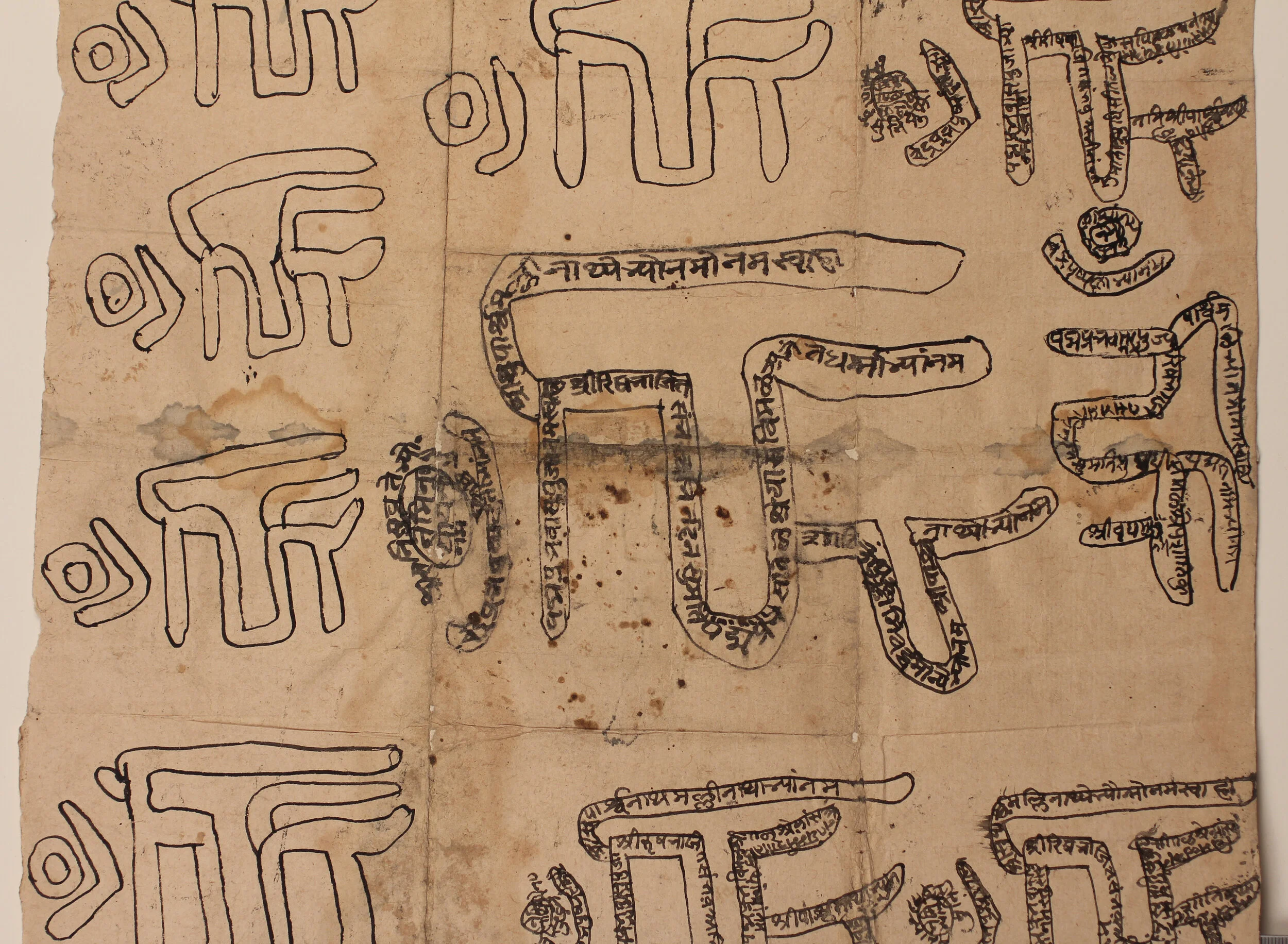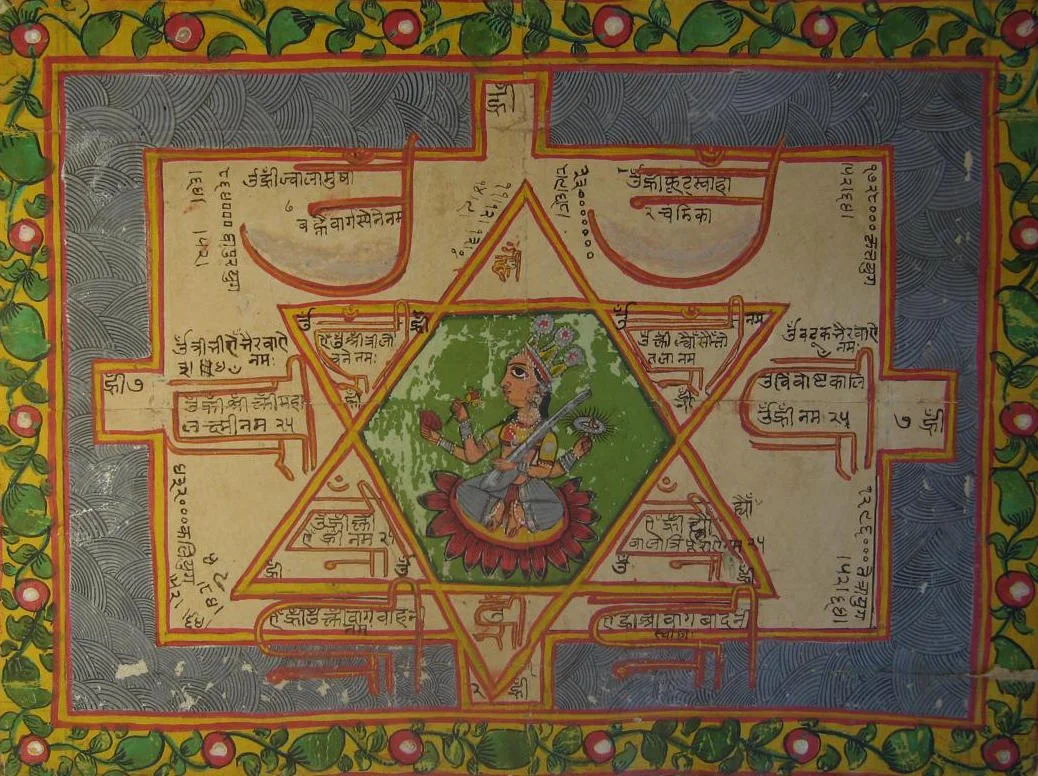The ultimate aim of yoga according to the Yogasūtra is kaivalya, the isolation of puruṣa, the male principle, or soul/spirit, from prakṛti, the female principle, or nature. And yet Bhoja, in his commentary on this text, begins by saying that this occurs through the union of Śiva and Pārvatī or Śakti in his form of ardha-nārīśvara, which literally means “the lord who is half woman.”
The Sanskrit word “tantra” literally means an instrument for stretching. Traditionally this refers to threads on a loom, but it has come to indicate a system which weaves together various techniques and practices to seek liberation and mystical powers…
One of my favorite Indian stories occurs in Bṛhadāraṇyaka Upaniṣad 3.9.1, where Vidagdha Śākalya, “the clever grammarian,” repeatedly asks Yājñavalkya how many gods there are. As he keeps asking his question, the answer goes from “three and three hundred and three and three thousand” to thirty-three to six to two to one-and-a-half to one.
The Aparokṣānubhūti provides a concise and accessible entry into Advaita (non-dual) Vedānta philosophy. Its 144 verses teach a method of vicāra or enquiry, which incorporates a fifteen-part system of yoga leading to samādhi, and ultimately to the realization of the oneness of ātman (the individual self) and brahman (the universal Self).
I find myself troubled lately by how frequently verses are quoted on-line without proper citation. Often I read - “The Bhagavad Gītā says,” or “[quote] the Yoga Sūtras.” But the truth is, if it's in English, none of these ancient texts “said” it. It is someone else's translation and interpretation. That being the case, it is important to acknowledge that person, both for their credit and also for the reader to understand the subjectivity involved in what they are reading.
I guess for me the physical asana has always been a tool to go inward. I encourage students if they are stuck at a posture not to look outwards (i.e. towards Facebook or youtube videos) for an answer, but to be present with that discomfort and see what it brings up. Even the frustration, anger and sadness – or whatever emotions may arise - are important. So often these days, people try to avoid sitting with that by putting too much emphasis on mastery of the physical. But our struggles in practice are meant to help us develop concentration and internal focus.
Inevitably if one practices yoga for long enough, one starts to suspect that it has more to do with the mind than the body. As originally described in Sāṃkhya philosophy, we are all born with a particular combination of the three guṇas, “qualities” or “threads,” which determine our individual personality. These three psycho-physical components are rajas (activity or energy), tamas (inertia or stability), and sattva (equilibrium, balance or luminescence).
I would now like to entertain the idea that this basis in polarity, itself, could contribute to the difficulty in understanding the yamas and niyamas and making sense of them within our lives. We could instead allow for a broader spectrum of possibility, rather than limiting our language, our thoughts, and thus our vision of reality to polar opposites, such as violence and non-violence, truth and untruth, celibacy or unconscious sexuality, purity or pollution. What if we made space for a reality to emerge that acknowledges the shades of grey, the rich complexities that are an inescapable part of being human?
If we deny or try to suppress a piece of who we are then we are not practicing yoga, we are not fulfilling our dharma (duty). Many Westerners misunderstand yoga - we think it is about withdrawal from the world, about abstinence, when in fact it should be a means to living more fully in the world, in all of our various individual capacities. The practice of yama and niyama is what situates a yoga practitioner in the world...
We all look, but do we see? How often do we bring concentrated awareness into our everyday viewing? Our eyes are the lens through which we learn about the world and ourselves in connection with the world, the very same tool through which we can discover the connection between the external and internal self.










